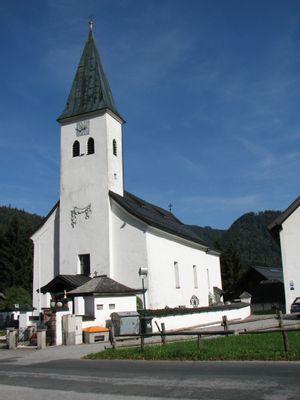This Austrian city sits beside the Salzach River, with baroque buildings and a medieval hilltop fortress. Mozart's birthplace, UNESCO-listed Old Town, and summer music festivals draw visitors year-round.
Salzburg, Austria’s fourth-largest city, lies near the Alps beside the Salzach River. The Old Town, recognized by UNESCO, has baroque buildings like Hohensalzburg Fortress, a medieval castle above streets such as Getreidegasse, where Mozart was born. You can explore Mirabell Palace Gardens, spots from The Sound of Music, and the Salzburg Festival, which hosts opera and theater each summer. The city’s past as a hub for salt trade and religious influence shows in its churches and the Salzburg Cathedral.
Walk Through Salzburg’s Old Town
Salzburg’s Old Town, added to the UNESCO list in 1996, packs baroque churches, squares, and shops into a small area. Begin at Residenzplatz, home to the archbishop’s former palace and a fountain from the 1600s. Head to Getreidegasse, a narrow street with historic store signs and Mozart’s Birthplace at number 9, now a museum with his early violins and letters. Cross the river to Mirabell Palace, completed in 1606, and walk its gardens laid out in precise patterns, facing the fortress. Enter Salzburg Cathedral to see its marble entrance and the font where Mozart was baptized.
Mozart’s Legacy and Annual Music Events
Mozart, born here in 1756, shaped Salzburg’s cultural roots. Tour his childhood home on Getreidegasse and the Tanzmeisterhaus, where he later lived, now displaying family artifacts. The Salzburg Festival, running each July and August since 1920, fills the city with operas and concerts at spots like Felsenreitschule, a former riding arena. In October, the Jazz & the City festival offers free performances in churches and squares. Year-round, venues like the Mozarteum and St. Peter’s Abbey host classical concerts, many focusing on Mozart’s compositions.
Hohensalzburg Fortress
Hohensalzburg Fortress, a medieval castle covering Festungsberg hill, remains one of Europe’s largest preserved fortresses. Ride the funicular or climb the path to see its Golden Hall, medieval weapon displays, and city views from the towers. The fortress once housed archbishops and now holds summer concerts in its ornate halls. Walk the Mönchsberg paths nearby for quieter overlooks, passing sculptures and ending at Augustiner Bräu, a brewery with a shaded garden. The Panorama Museum, set to reopen in 2025, will display a circular painting of 19th-century Salzburg.
Lakes, Mines, and Film Locations
Salzburg provides easy access to the Salzkammergut area. Lake Fuschl, 30 minutes by bus, has clear green waters for swimming, and Hellbrunn Palace, south of the city, includes water-powered fountains from the 1600s. Join a Sound of Music tour to visit Leopoldskron Palace’s lake and Hellbrunn’s gazebo. Drive 20 km to Hallein for its Celtic Museum and salt mine tours, or go 150 km to Hallstatt, a village on a lake with mountain views. Untersberg mountain, just outside Salzburg, has a cable car to trails overlooking the city and Bavaria.
Planning Your Visit: Tickets, Transport, and Timing
Buy a Salzburg Card for free admission to top sites like the fortress and Mozart museums, plus bus and tram rides. Most attractions are within walking distance, but buses run to Hellbrunn Palace and the airport, which connects to cities like Frankfurt and Vienna. Summer brings crowds during the Salzburg Festival, so reserve hotels months ahead. For fewer visitors, come in May or September, when the jazz festival and pre-Christmas markets open. Many museums shut on Mondays, but churches, gardens, and the fortress stay open.
Traditional Dishes and Brewery Visits
Try Salzburger Nockerl, a fluffy dessert topped with powdered sugar, at Gasthaus Hinterbrühl, or Bierfleisch, pork stewed in beer, at Sternbräu near Getreidegasse. Stiegl Brewery, Austria’s biggest independent beer producer, offers tours in a 15th-century building outside the city center. SENNS.Restaurant, in a former metal workshop, serves modern dishes paired with Austrian wines. Stop at Café Tomaselli on Alter Markt square for coffee and apple strudel at tables beneath crystal lamps.
Historic Cemeteries, Churches, and Lesser-Known Streets
St. Peter’s Abbey, founded over 1,300 years ago, includes a cemetery with detailed metal grave markers and catacombs dug into the cliff. Nearby, St. Sebastian’s Cemetery holds the graves of Mozart’s widow and father. Explore the Mönchsberg catacombs, small caves used by early Christians for prayer. Walk Steingasse, a narrow lane once busy with salt traders, now lined with pubs and views of the fortress. The DomQuartier museums, inside the Residenz Palace and cathedral, display religious art and royal collections.





















